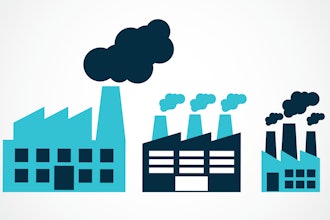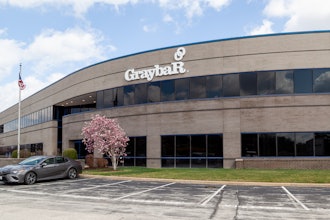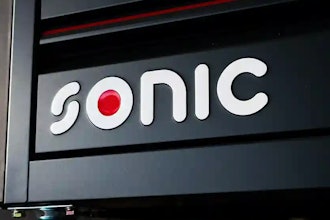Some distributors are beginning to wonder if face-to-face meetings with their customers — and the sales that hopefully come with these meetings — are becoming a thing of the past. After all, they see what is happening with e-commerce in the B2C world and just assume what is happening there will make its way into the business-to-business world as well.
The 2015 Holiday sales season is a perfect example of what is occurring. Salespeople at an upscale men’s store on Chicago’s Michigan Avenue were disappointed because walk-in traffic, which has been on the decline for years, was never slower than it was this past period from Thanksgiving to Christmas. And while this chain of stores, like so many other retailers, did not have a record holiday sales season in 2015, they joined other retailers in reporting significantly increased sales online.
This should come as no surprise. According to MasterCard Advisors, online retail sales increased 20 percent between Black Friday and Christmas Eve in 2015 compared to the same period in 2014. This is indicative of a clear shift that we have been seeing here in North America and in many parts of the world over the past five to ten years. Retail sales are transferring from brick-and-mortar locations to e-commerce, and what is happening in retail is also happening, according to different reports, in B2B sales.
This sales trend is especially evident among millennials and younger people who are now in key purchasing positions. Very simply, the majority of the buying experience of these younger buyers has been online using e-commerce sites. The increasing adoption of smartphones and tablets has accelerated the pace of this trend.
So why is this happening? In a study reported by HubSpot, a leading online marketing firm, consumers were asked why they prefer to make purchases online. The top responses were as follows:
- Larger selection (25.4%)
- Better pricing (25%)
- More convenient (24.7%)
- Time savings (7.2%)
- Easy to compare (3.6%)
- No sales tax (3.3%).
And now that quick, if not overnight, delivery from many online retailers is becoming status quo — and often free to boot — reasons for not shopping online are dwindling as fast as dial-up Internet service. So now you can understand why many distributors are wondering if face-to-face sales still matter. Will this new generation of purchasers still have a need for a distributor knocking on their door?
The answer to this question is complicated. While more online sales are inevitable, face-to-face meetings will still have their place, but at these meetings distributors have to bring clear value to the customer.
Salespeople may once have functioned largely as order-takers for distributors; this can no longer be the case as customers place their own orders online. Distributors now must bring value to their customers through strategic planning functions, education, and problem-solving. Web-based systems are another tool distributors can use to accomplish this and enhance their effectiveness at serving end-customers.
Distributors and E-Procurement
Because e-commerce, or as it is sometimes referred to in B2B sales, “e-procurement,” continues to be prominent and popular among buyers, it is imperative that distributors have an effective e-commerce website. A high-quality website interface for customers is also something these technologically sophisticated business buyers expect as one of the credentials of a highly professional supplier.
B2B customers like e-procurement purchasing for many of the same reasons they like e-commerce websites. However, business customers will especially enjoy the following additional benefits:
- A virtual elimination of paperwork and paperwork handling since everything is digital
- Improved communication between the purchaser and the distributor, and between the distributor and the supplier when necessary
- Fewer ordering errors
- Lower overhead costs for both contractors and administrators
- Just-in-time product availability
Some distributors have done exceedingly well with their e-procurement sites, finding that less time spent on “order process” allows more time to be spent on strategic value-added services. However, other distributors are still struggling with their sites or may not even have one at all. For those without a site, it’s time to get on the bandwagon. You are missing a profit center that cannot be overlooked.
There may be many reasons — some actually quite basic — why distributors struggle with their e-commerce sites:
- The site may not be pleasing in appearance or have a poor overall web design.
- It may be difficult to navigate.
- In some cases, the “submit” or “purchase now” button is hard to find.
- The purchasing process may be too complicated.
- The site may not be directed to the right end-customer.
- The site may ask too many questions or require setting up an account before allowing a purchase to be made.
- It may lack customer service options offering ways to get questions asked and answered quickly.
- The site may not provide enough product information for customers to make an effective buying decision.
Fortunately, solutions to these problems are often easy to implement. And as soon as these issues are addressed and rectified, not only will a distributor’s e-procurement site have greater potential to generate sales, it can potentially open the door to more face-to-face meetings between distributors and their customers.
Technology and Strategic Value
Earlier we mentioned that one of the benefits of purchasing online is that it helps distributors spend less time on processing orders and more time on providing strategic value-added services. Some distributors have managed to accomplish this with their e-procurement sites and some have taken technology a step further and are offering new online technologies, some of which are free, that take a look at a customer’s entire supply chain needs.
While functionality and appearance may vary, some of these systems are designed to prompt thought-provoking questions of these end-customers such as:
- What is most important to the success of your facility? (To improve operating efficiencies? To become more sustainable? To drive down cost? Enhance marketing and branding for the facility?)
- How important is reducing supply chain costs to your facility?
- What is driving your facility’s sustainability initiatives (or lack thereof)?
- Are you currently using forecasting and budgeting tools?
- Is your facility certified by a third-party organization? If not, how important is this to your facility?
These questions are intended to help end-customers clarify their facilities’ needs and goals or, in some cases, direct users to products that are, for example, most cost effective or address green and sustainability issues. E-procurement can lead them in the right direction but meeting with the distributor face-to-face may still be required…allowing the distributor to play a much more vital role as trainer, educator, and strategic advisor for the customer.
Elevating the Distributor
So, will e-commerce and e-procurement sites play a bigger role in our B2B customers’ future? There is only one answer: yes. But, will they eliminate the need for a distributor? That is going to be up to the individual distributor.
Technology is affecting and impacting buying in all industries, and eliminating some jobs entirely. However, when it comes to distributors, an opportunity exists. The changes that are evolving may also elevate the distributor so that he or she plays a far more crucial and significant role in their customers’ business operations than ever before. By embracing the technological advancements, distributors can advance their businesses even further.
Michael Wilson is Vice President of Marketing for AFFLINK, a sales and marketing organization, providing clients with innovative process as well as procurement solutions to drive efficiencies in today’s leading businesses. He can be reached thru his company website at www.AFFLINK.com























